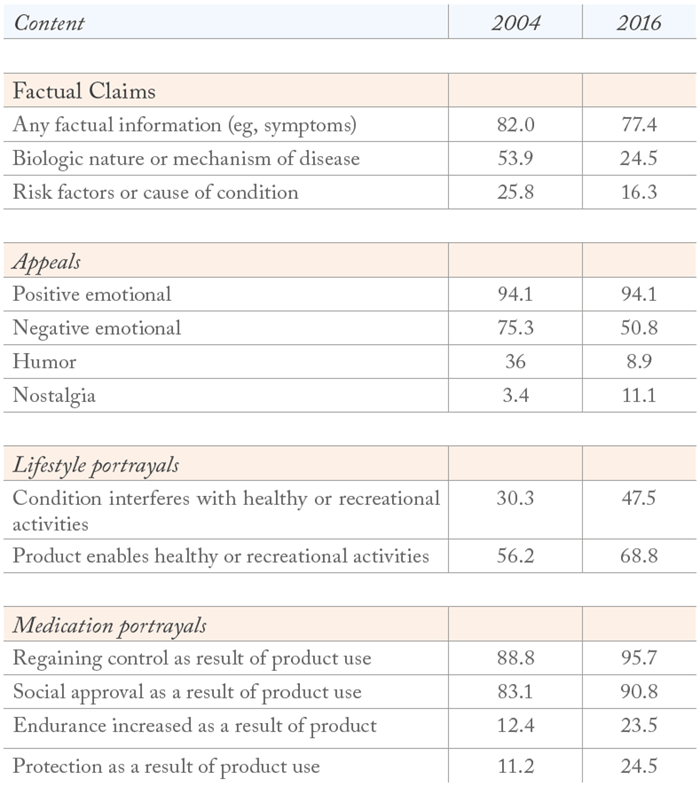In 2005, the Pharmaceutical Researchers and Manufactures of America (PhRMA) issued its set of principles on how pharma companies should advertise their products to consumers on TV. They stated that information about drug benefits and risks should be accurate, clear, balanced, and evidence-based in compliance with regulations. In addition, ads should responsibly educate consumer about the medicine and the condition, promote health and disease awareness, and inform the audience about other options, such as diet and other lifestyle changes, where appropriate (1). Are pharma companies today meeting those expectations? And how has pharma advertising changed over the past 13 years?
Janelle Applequist and Jennifer Gerard Ball, researchers from the Zimmerman School of Advertising and Mass Communications at the University of South Florida, compared direct-to-consumer pharma ads from 2004 to those broadcasted in 2016. They found that, on the whole, adverts in 2016 were longer, contained less factual information about the drug and focused more on lifestyle improvements made post medication (1). Here, we present some of the main findings.

References
- J Applequist and JG Ball, “An updated analysis of direct-to-consumer television advertisements for prescription drugs”, Ann Fam Med, 16, 211-216 (2018). PMID: 29760024.




